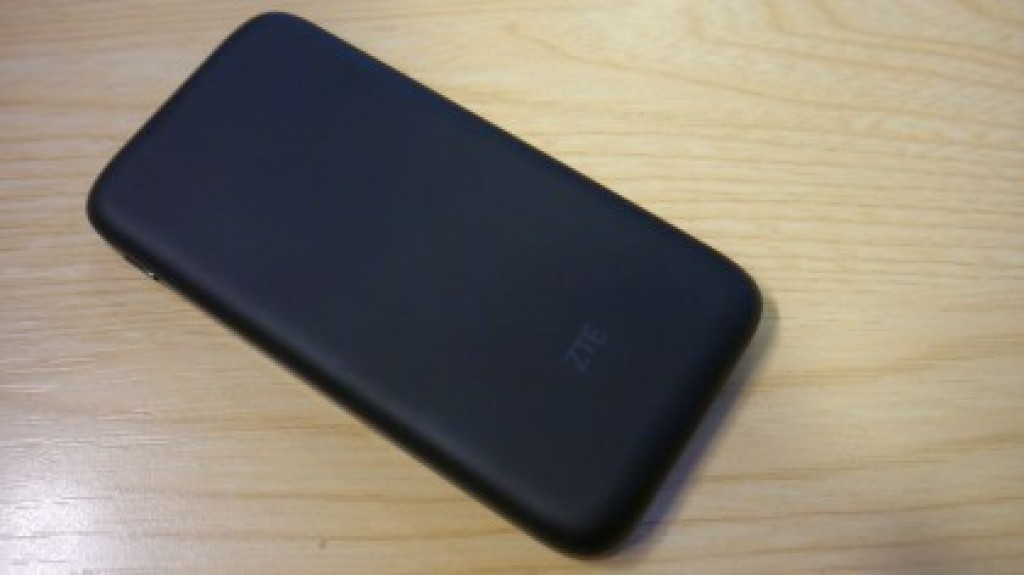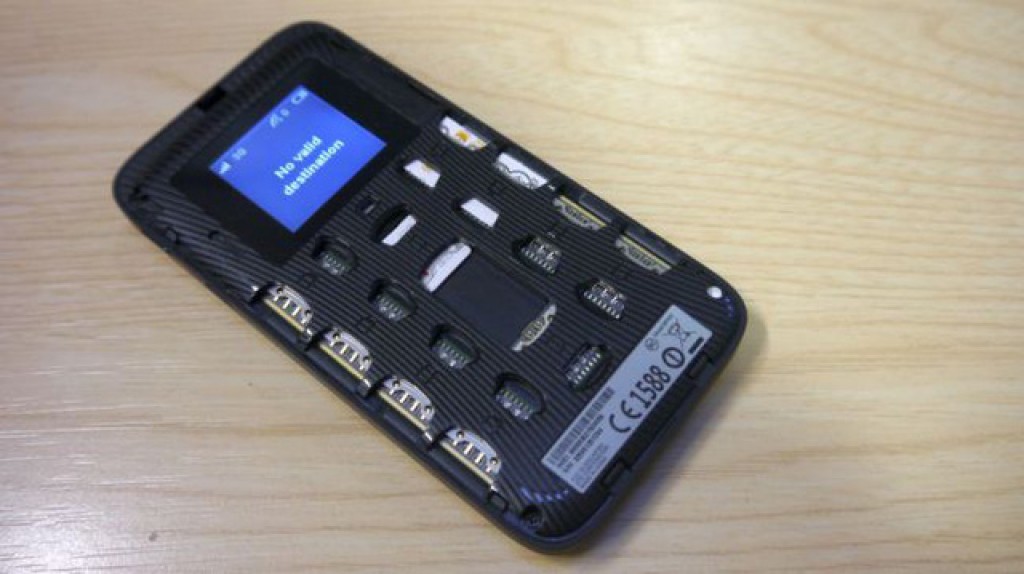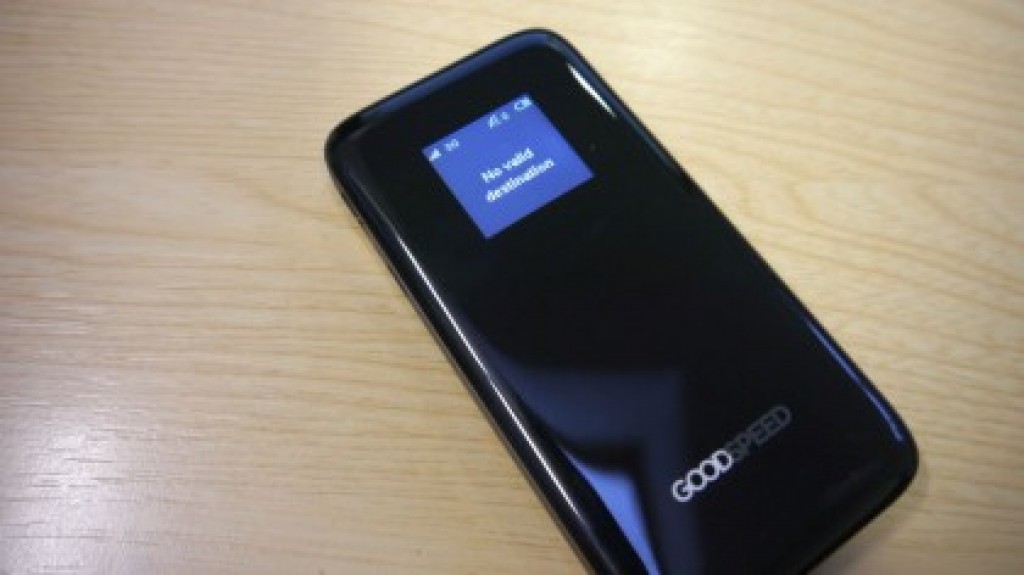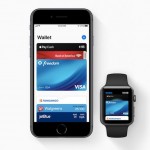
OUR VERDICT
- The Uros Goodspeed MF900 is a solid product for businesses who travel frequently and need secure, reliable connectivity outside Europe. But that comes at a cost.
FOR
- Straightforward to use
- Supports 4G
- Plenty of SIM slots
- Great user interface
AGAINST
- Price structure not always clear
- No microSD slot
- 4G only in a few countries
- Just 75 countries covered
(16/10/2017: The price of the device has been reduced to £119 + VAT, a 43% discount of the original price of £209)
Mobile hotspot devices are now a rare sight on daily commutes. Blame the rise of tethering – which uses the built-in capabilities of modern mobile OSes and more generous data packages – for that.
However, there is a niche market for mobile hotspot devices and that is international travellers. The Uros Goodspeed is one of them and specifically targets businesses and their roaming employees.
Built by ZTE, the MF900, as it is also known, supports up to 10 SIM cards at once – you will need to use adaptors for nano-SIMs. One of those slots is reserved for the Uros system SIM.

Design
Externally, it is slightly thicker than a standard smartphone with a 128 x 128-pixel OLED display and a tiny blue status LED on the fingerprint-friendly shiny plastic front facia.
Sliding the latter down gives you access to SIM card slots. The rest of its body is made up of a soft-grip material, anthracite in colour.

Assuming that you have already signed up as a Goodspeed user and activated the device, switch it on – the power button is located on the left – and you’re faced with a familiar user interface. Remember those feature phones from 10 years ago?
You’ve got the battery icon, the network connectivity one (showing either 3G or 4G) as well as the Wi-Fi hotspot icon which tells you how many devices are connected. Surprisingly, there is no microSD card memory slot, a useful addition found in most recent, standalone mobile broadband devices.
Our test device did an OTA (over the air) update on starting up and quickly displayed the territory and the status (i.e. connected) after a couple of minutes searching for networks.

Sadly, we couldn’t test the service outside of the UK – Uros tells us that searching for networks in other countries might take just as long if not longer. Fortunately, the MF900 provides you with a handy progress bar as well.
Using the device
You can cycle through the status screens thanks to a menu button on the right. The second screen gives you the details of the hotspot – SSID and password – while the third one provides you with the device details (serial number and software version).
You can access the control panel of the hotspot via your browser and see devices being connected as well as changing its basic settings (including decreasing the number of devices connected and the range of Wi-Fi coverage).

A short Wi-Fi range coupled with an aggressive sleep time setting ensures that the 3200mAh battery lasts for far longer. The latter is a significant improvement on previous models – according to ZTE, the battery will last up to 12 hours on a single charge, stay in standby mode for seven days and get a full charge in three hours. As always, your mileage will vary depending on a number of variables.
The modem supports software-based encryption and uses a Qualcomm Gobi MDM9225 modem chipset which supports all mainstream 4G frequencies (FDD/TDD) with theoretical upload and download speeds of 50Mbps and 150Mbps.
Obviously, you will never actually reach those speeds but it is reassuring to know that 4G is available, especially as up to 15 devices can be connected to the MF900 at any time, 14 via Wi-Fi (up to 802.11n) and one via the USB port.
The Uros Goodspeed MF900 is only as good as its coverage and at the time of writing, 75 countries were part of the network with only 10 countries offering 4G, most of them in Europe.
There were some notable exceptions though. China and Egypt for example were greyed out and Mauritius, a popular destination for Brits, was not part of the bundle.

Pricing
You can buy the device on its own for £198 excluding VAT (around $300, AU$410) with the £13.70 day-pass being the best option, or on a two-year contract for £19.10 monthly, a deal which includes the Pro Plan which allows you to use your own SIM cards. That excludes an activation fee for each SIM card ordered which adds to the delivery fee as well.
Businesses would probably be better off with the aptly-named “Business” plan which offers a day-pass from as little as £4.90 with additional features including centralised device management, usage statistics and API access to data.
Note that there’s an additional fee to be paid and the daily data limit on all three tiers is either 500MB or 1GB depending on your selected territories. Fortunately, when you reach your data limit, you will be slowed down rather than totally disconnected.
Ordering SIMs for your travel needs can be done online but bear in mind that they are locked to your devices and won’t work on any other devices.
We liked
The MF900 is a solid product which is easy enough to use, helpfully boasting a smartly designed user interface. It allows for 4G surfing and provides plenty of SIM slots – you get 10 of them, with nine being usable (as one is taken up by the system SIM card). Battery longevity is impressive too, which always helps.
We disliked
Only 75 countries are covered by the Uros Goodspeed, and if you want superfast speeds, the number of territories is narrowed to just 10 (mostly European countries) for 4G coverage. The data allowance provided with the device isn’t very generous, either, and the pricing structure could be clearer. It would also have been nice to see a microSD slot, as they are common on mobile broadband devices these days.
Final verdict
It is abundantly clear that the Uros Goodspeed MF900 is best suited for organisations that regularly send small groups of employees outside Europe and need them to be connected in a secure way, probably at the same time, occasionally to their laptops, possibly on the move. Forget videoconferencing or even VoIP though.
Alternatives to the MF900 come in different shapes. Most hotels and airports now have reasonably decent Wi-Fi connections and even if these often come at exorbitant prices, they are rarely capped.
You can also get a reasonably cheap 4G mobile hotspot device and buy your own data SIMs but then you will need to worry about expiration dates, login details, foreign currencies and data allowances.
Within the EU, most UK phone networks offer roaming data bundles that can be easily managed as well, although we can’t confirm whether tethering is available on all of them (it isn’t on Three’s feel-at-home – we’ve checked).
Regardless, data roaming charges will be abolished by June 2017 with reduced-rate fees introduced from April 2016 onwards.
While the cost won’t necessarily be an issue for companies looking to roll out such a system, the low data allowance combined with the fact that SIM cards still need to be handled manually means that the MF900 is a product that fulfils a niche segment but not necessarily its full potential.
Sоurсе: techradar.com









































